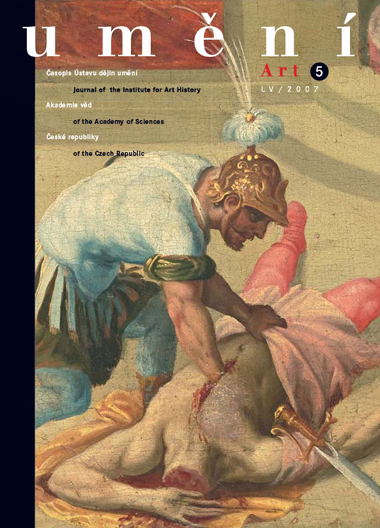Achim Timmermann
The Poor Sinners' Cross and the Pillory: Late Medieval Microarchitecture and Liturgies of Criminal Punishment
This paper focuses on two types of late medieval judicial monuments which were occasionally given sophisticated microarchitectural forms - the so-called poor sinners' cross or confessional cross (literal translations of the German terms Armsünderkreuz and Beichtenmarter), and the pillory. The essay has two aims: First, to stimulate a discussion about the ways in which such works of microarchitecture accentuated and structured the performance of civic rituals; and second, to contribute to a recent debate that investigates the entanglement of late medieval urban enactments of criminal punishment with contemporary pictorial and liturgical enactments of the historical Passion narrative. The following monuments are analyzed within their respective judicial and ritual contexts: The Spinnerin am Kreuz in Vienna (1451-1452), the Zderad Column in Brno (dated variously between the late 14th century and the 1470s), and the pillories of Wrocław (1492), Schwäbisch Hall in Swabia (1509) and Kasteelbrakel / Braine-le-Château in southern Belgium (1521). Placed both at the periphery and at the center of the late medieval city, these structures left a characteristic and potent signature on people's everyday environment. By projecting microarchitecture, images and narratives onto a piece of geography, they invested a place with meanings that had little to do with its actual form. Topographic features such as market squares, roads, and fields were thus mnemonically marked as places where justice has been done, or will be done, as places of social cleansing, expulsion and re-entry. Where Passion imagery or quasi-liturgical types of microarchitecture provided a visual and semantic backdrop to the discourse of criminal justice, these places furthermore reverberated with the collective or individual memory of the events of Golgotha, and, at least in theory, transformed themselves into moralizing stages on which the delinquent could be seen to experience his own physical or social extinction.
Full-text in the Digital Library of the Czech Academy of Sciences:
https://kramerius.lib.cas.cz/uuid/uuid:191595b3-50f9-41cc-8ee6-0a0f2ca1ba01
< back

